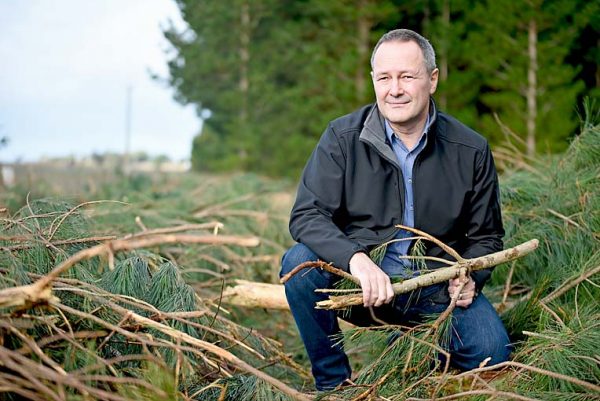
THE state’s peak forestry industry body has called for more scientific research into tree water use amid growing concerns over the lack of growth in the plantation sector.
Australian Forest Products Association has flagged fresh concerns over the State Government’s water policy and its water allocation process for the Lower South East.
The association has questioned the credibility of the science used to monitor tree water use and warns restrictive water policy has already resulted in the loss of thousands of hectares of plantations in the region.
With the South Australian forestry sector accounting for 14pc of the national industry, the industry group says around 140 million new trees will need to be planted in the state over the next decade.
It is feared the current water policy will put the brakes on future growth of the Mount Gambier and district’s expansive timber processing sector, which underpins thousands of jobs.
Association state branch manager Leon Rademeyer said the industry group – which has officially raised these issues with Environment and Water Minister David Speirs – was seeking a moratorium on any forestry water allocation reductions.
He said a number of issues stem from the 2018/19 Lower Limestone Coast Water Allocation Plan (LLC WAP) “science review”.
“The forestry industry found the science review to be lacking in a number of areas, including in regard to insufficient credible monitoring sites in forestry over-allocated zones, which foreshadows policy decisions not supported by solid scientific principles,” Mr Rademeyer said.
He highlighted an “overarching concern” that an unchanged government water policy would continue to see further decreases in plantation area in the region, with a proportional reduction in economic value as plantation areas are clear-felled and not replanted.
“This should be seen against Australia’s national wood fibre shortage and the Federal Government’s subsequent push to plant a billion new production trees nationwide by 2030,” Mr Rademeyer said.
Without a supportive water policy and allocation plan, this goal and the economic benefits it promised would be almost “impossible to achieve”.
Mr Rademeyer said the State Government also made a pre-election promise to work towards doubling the economic value of
the domestic timber manufacturing industry – including the Mount Gambier region – by 2050.
“However, to double the value of the industry, new planting at a large scale must start in the next few years for additional log to be available by 2050,” he said.
Other issues include farm forestry expansion by removing the farm forestry water licensing impediment, which had historically been problematic.
Mr Rademeyer said AFPA SA and the Green Triangle Regional Plantation Committee have been representing the forestry industry on the LLC WAP Science Review Advisory Group since its inception in 2018.
“But, while industry representation was included in the midterm review, forestry water use was out of scope and thus not included,” Mr Rademeyer said.
“For us the risk is not having had an opportunity to constructively review the science of the LLC WAP until the start of the full review in 2022/2023.
“Although we have been working constructively with the Department of Environment and Water and other advisory group stakeholders, we are conscious of the fact the timber industry as a whole could be severely impacted by the current LLC WAP, including causing uncertainty among investors.”
Mr Rademeyer said the association had been seeking an undertaking from Mr Speirs’ office of no forestry reductions arising from the 2018/19 LLC WAP Science Review.
“As an industry, we are also seeking a moratorium on any forestry water allocation reductions until monitoring sites are improved so that decisions can be based on solid science,” he
said.





